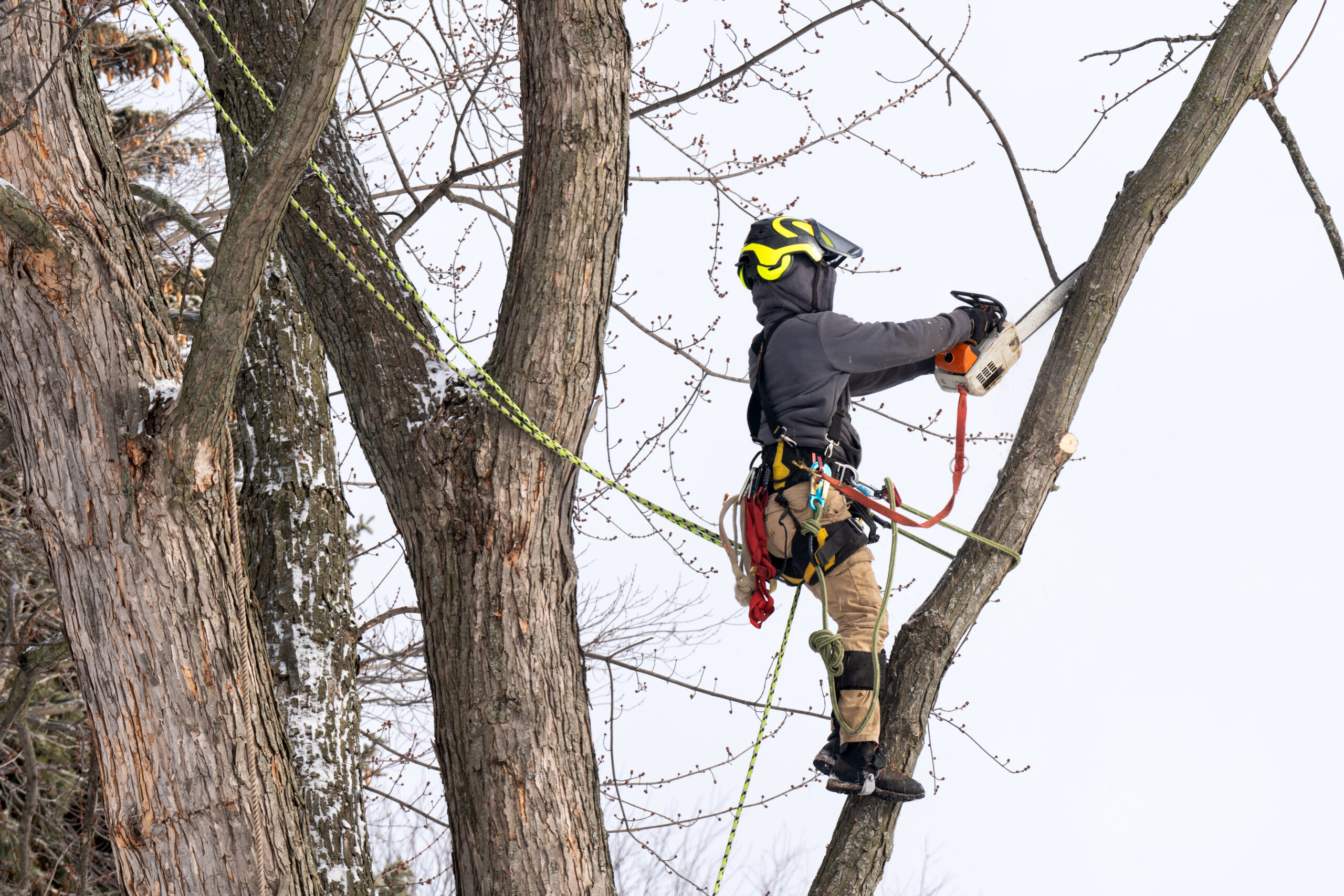The Best Time to Prune a Tree
Pruning is a crucial aspect of tree care, playing a vital role in maintaining tree health, aesthetics, and safety. However, one of the most common questions we encounter as arborists is, “When is the best time to prune a tree?” The answer, as with many things in tree care, is: It depends. There are many factors that influence the optimal pruning time for different types of trees and various pruning goals.
Understanding Tree Types: Deciduous vs. Evergreen
Deciduous Trees: These trees shed their leaves annually and typically benefit most from pruning during their dormant season, which is late fall to early spring.
Why Winter Pruning?
- Reduced Risk of Infections: Insects and diseases are less active during the colder months, reducing the likelihood of infections and decay spreading through fresh cuts.
- Clear Visibility: With no leaves in the way, it’s easier to identify and remove branches that are dead, damaged, or diseased. This helps in shaping the tree and promoting strong structure.
- Minimal Wildlife Disturbance: Pruning in winter minimizes the disruption of bird nests and other wildlife habitats.
Evergreen Trees: These trees retain their foliage year-round and can be pruned at almost any time of the year. However, late winter to early spring is generally the best time to prune evergreens.
Why Early Spring Pruning?
- Encourages New Growth: Pruning before new growth starts in the spring encourages a flush of healthy, vigorous new branches.
- Better Healing: Trees are beginning to wake from dormancy, and the rising sap helps seal cuts more quickly, reducing the risk of disease.
Pruning Based on Your Goals
Maximizing Growth: If your goal is to encourage robust growth, the best time to prune is during the dormant season. This is particularly important for fruit trees and young trees that need shaping.
- Fruit Trees: Pruning during dormancy helps to distribute fruiting wood and focuses the tree’s energy on producing fruit on the best branches.
Minimizing Growth: To control or limit the size of your tree, prune after the initial growth spurt in spring but before the tree fully leafs out in summer.
- Ornamental Trees: Pruning in late spring or early summer can help maintain a desirable shape without encouraging excessive new growth.
Flowering Trees: The timing of pruning flowering trees depends on when they bloom.
- Spring-Flowering Trees: These should be pruned immediately after they finish blooming. Pruning them in winter will remove buds that would have bloomed in spring.
- Summer-Flowering Trees: These can be pruned in late winter or early spring before new growth begins.
Important Considerations
- Avoid Fall Pruning: Pruning in the fall can stimulate new growth that doesn’t have time to harden before winter, making it susceptible to frost damage.
- Tree Health and Safety: Always remove dead, damaged, or diseased branches as soon as you notice them, regardless of the season. This helps maintain tree health and safety.
- Consult with an Arborist: Each tree species and individual tree may have unique needs. Consulting with a certified arborist can ensure that your trees are pruned at the optimal time and in the best manner for their health and your goals.
The best time to prune a tree depends on various factors, including the type of tree, its health, and your specific goals for the tree. Understanding these factors and timing your pruning correctly can enhance your tree’s health, beauty, and productivity.
Unsure about the best time to prune your trees? Contact us today to schedule a consultation with our certified arborists. We’ll help you develop a tailored pruning plan that promotes the health and beauty of your landscape.

